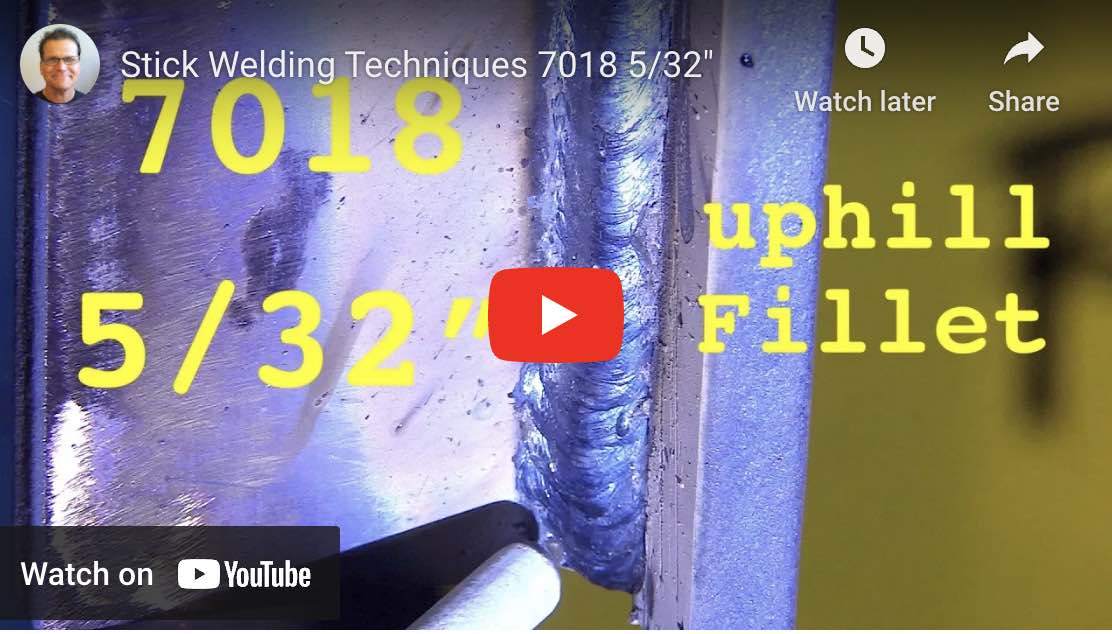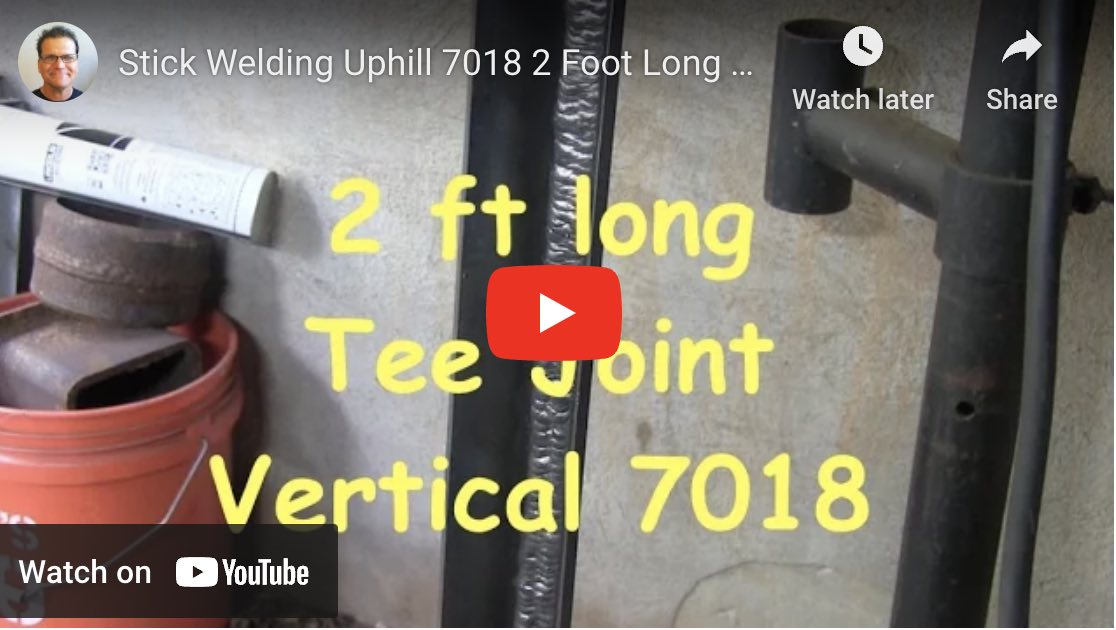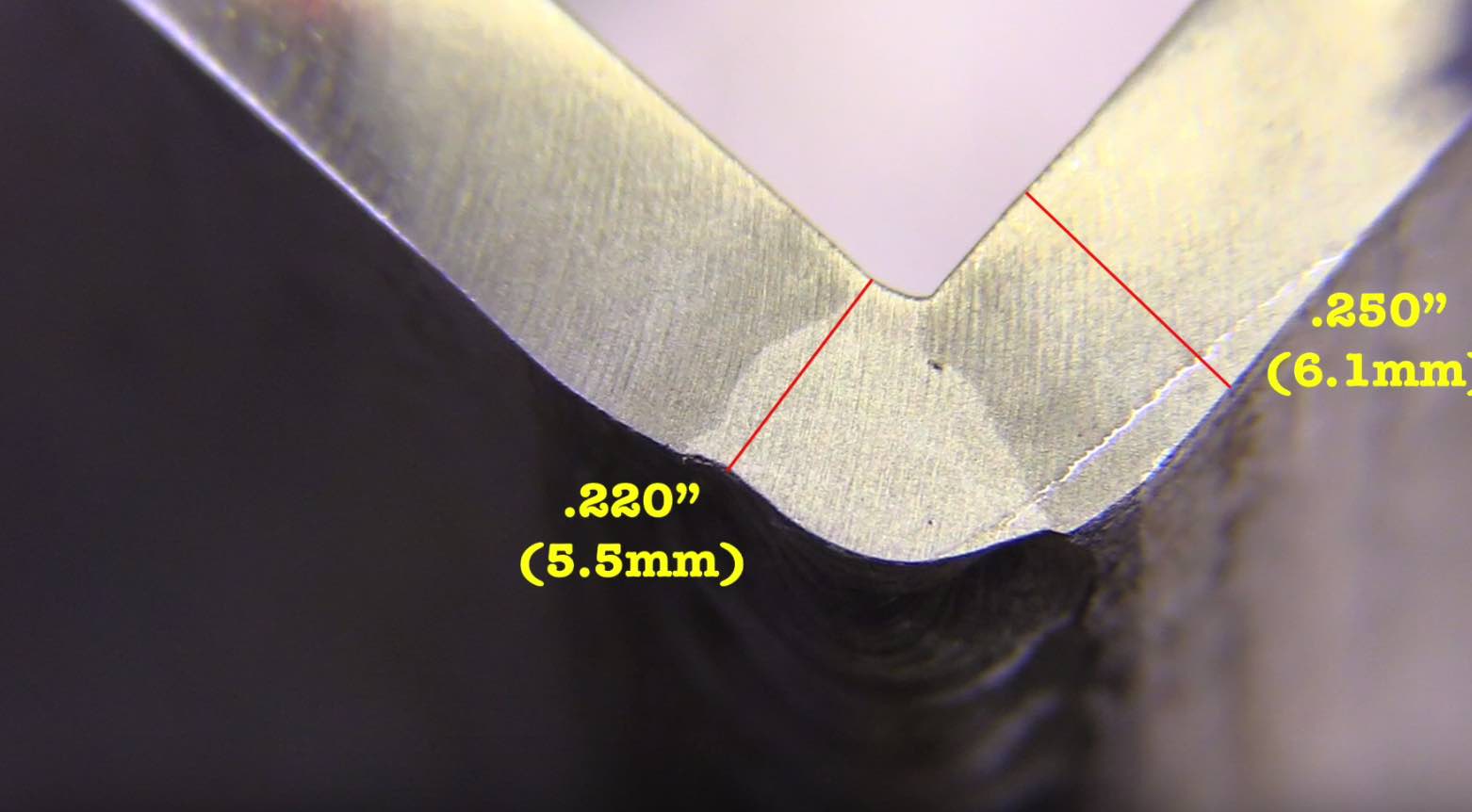How to Weld 7018 Vertical
When it comes to welding with the 7018 electrode in the vertical position, several factors play a crucial role in achieving a successful weld. Let's discuss the importance of amperage, polarity, arc length, and rod angle in this context:
- Amperage: For vertical welding with the 7018 electrode, an appropriate amperage setting is one of the keys. One piece of advice I give for stick welding vertical with 7018 is to "set the amperage high enough that the rod won't stick when you hold a tight arc...then hold a tight arc." For a 1/8" 7018 rod on vertical uphill, 115 amps is often about right for 1/4" and thicker. All 7108 are not equal so you might need to set amps to 115 and go from there. The ideal amperage setting varies depending on the specific circumstances, such as the thickness of the material being welded, electrode diameter, electrode manufacturer, and joint design. Consult the manufacturer's recommendations or welding procedure specifications (WPS) to determine the appropriate amperage range for vertical welding with 7018.
- Polarity: Polarity refers to the direction of the electrical current flow between the welding electrode and the workpiece. In the case of the 7018 electrode, it is most often used with direct current electrode positive (DCEP) or reverse polarity. This means that the electrode is connected to the positive terminal of the welding machine, while the workpiece is connected to the negative terminal. Again, if there is a WPS involved, it will specify polarity.
- Arc Length: Arc length refers to the distance between the tip of the welding electrode and the workpiece. Maintaining the appropriate arc length is helpful for successful vertical welding with the 7018 electrode. A shorter arc length provides better control and stability, allowing for better penetration and weld quality. However, if the arc length becomes too short, it can cause a hump in that part of the bead and you might even stick the rod. The arc control setting also known on some machines is "Dig" function can help because a higher setting bumps up the amperage when the arc length becomes too tight. On the other hand, a longer arc length can result in undercut and lack of control over a vertical weld.
- Rod Angle: Rod angle refers to the angle at which the welding electrode is positioned relative to the joint being welded. In vertical welding with the 7018 electrode, a slight push rod angle is often preferred. This means that the electrode is inclined slightly upward.
Overall, paying attention to amperage, polarity, arc length, and rod angle is helpful for vertical welding with the 7018 electrode.

















